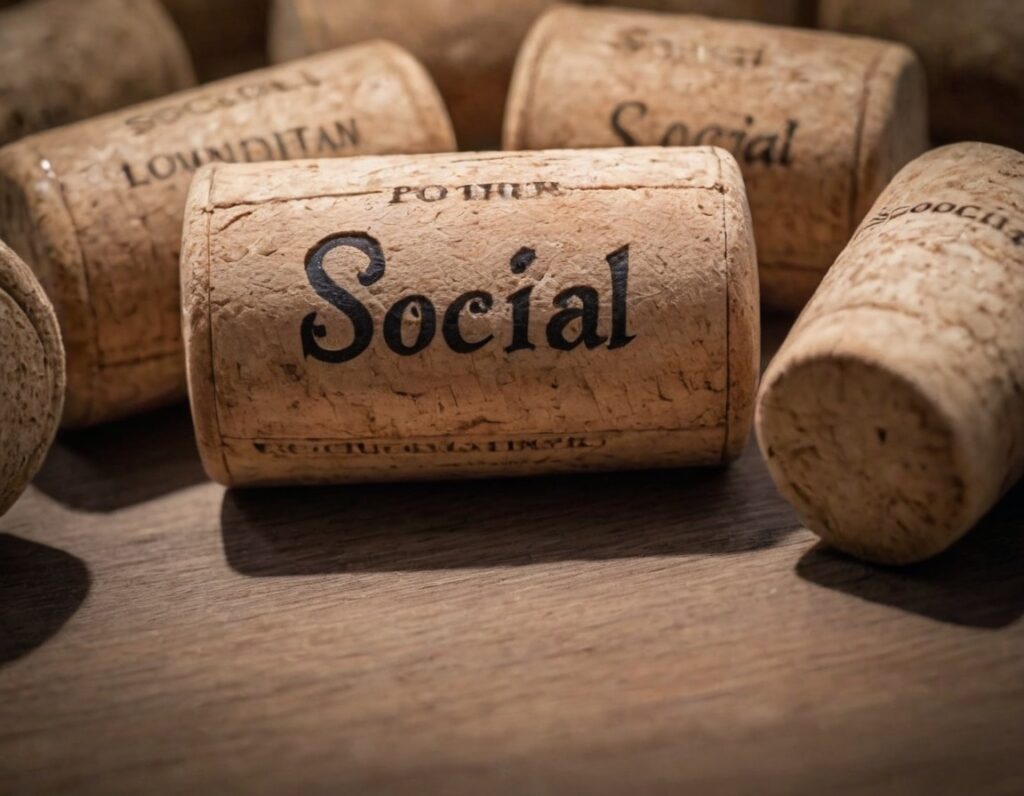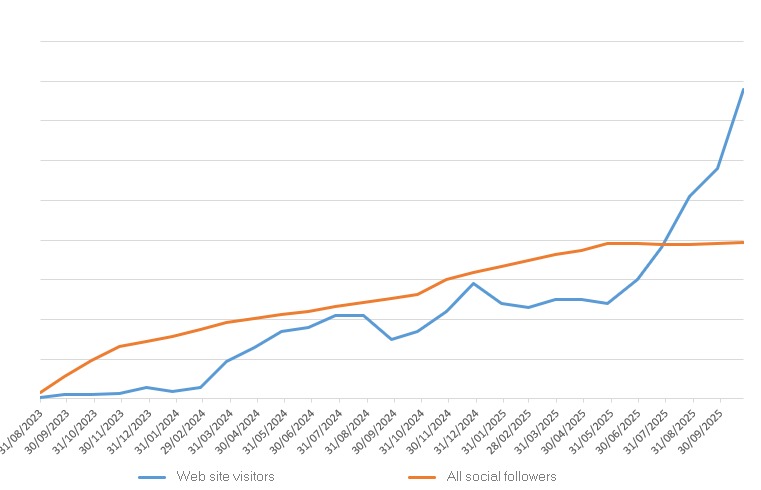
I prefer to manage a website as my main platform while most wine enthusiasts are concentrating on boosting their social media presence. I do use social media to share headlines, draw attention and message, but the bulk of my content stays firmly on my site. While gaining followers on social platforms is useful and even fun, it’s not my primary goal.
You might think this approach is a bit old-school, but I see it as being more about thinking differently, controlling the narrative and planning for the unexpected. The truth is, social media posts can be quite fleeting. Posts are quickly overshadowed by newer ones. On Instagram on the phone, I often read something and the whole feed auto-updates completely losing what I am reading. Posts are at the mercy of ever-changing algorithms that can hide or even accidentally ban content or the whole account without notice and with no visible means of rectifying. Also, I need to write what I want to write, not something else just to please an algorithm. There’s also the issue of potentially having your content placed next to posts or adverts you’d rather not be associated with, which can sour the context. As Twitter has shown, a whole platform can become toxic and not something you want to be associated with.
Heavy reliance on social media can be risky, as accounts are increasingly targeted by hackers. Using tactics like phishing and weak password exploitation, attackers can take control, lock out the owner and change security settings. Victims often lose years of content, suffer reputational damage, and risk exposure of financial details. Recovery is rarely straightforward. Many users receive generic or no support from platforms, leaving them permanently locked out. For instance, Heather Dempsey, a small business owner, lost her Facebook and Instagram accounts to hackers and, despite repeated attempts, was unable to retrieve them or the valuable content they held.

As a personal example, the Instagram ‘algorithm’ has five times temporarily banned me from commenting and viewing others’ followers because it mistakenly thought I was posting fake reviews in exchange for money (see rule I was shown, left). I also had a strange six month period when I couldn’t follow anyone and it always said ‘requested’ when I tried.
While mentioning Instagram, I have noticed that the ratio of adverts to posts seems to be increasing over time. It has reached a point where it is starting to put me off reading and engaging with the content. I now have a rule, three adverts in my feed and I stop reading. More recently, I discovered that the app was responsible for around 20% of my daily battery usage, mainly when running in the background with background activity explicitly disabled in the settings. As someone with expertise in how apps operate, I spent decades writing iOS and Andoid apps for a living, it’s clear to me that it’s making use of system-level services to perform tasks in the background, maybe even doing things I would prefer not to have happening. If I am feeling this way, I can only assume that others are experiencing the same conflictions.
There’s a lot of talk about AI taking over and fears that website content will simply be scraped. But honestly, I’m all for my content being picked up in this way. In this new age of web searches dominated by AI, authenticity and truth counts more than ever, and people are more-often checking the facts for themselves, via links provided by AI, which brings them right back to the source. The landing visitor stats from my website have shown a shift from traditional search engines to AI-driven searches, highlighting this new trend.
I have even had the situation where I myself had a question about wine and decided to use ChatGPT to search for the answer, only for it to find a page on my own website where I had already provided it! It was a strange but amusing reminder that I am definitely getting older and forgetful!

winedrinker.co.uk web traffic is increasing faster than the total of my social followers
Having my own site also means I get anonymous web site statistics, hosted by the site itself not Google or anyone else, that provide a much clearer picture of what people are reading. I can see not just how many, but how engaged they are with the content and which topics resonate the most. For example, I know the majority of first-time traffic comes from people searching for a review of a specific wine each time. They might be in store, in restaurant or web browsing, deciding whether to buy or not. This kind of insight is priceless and reaffirms my commitment to keeping my website at the heart of my digital presence.













